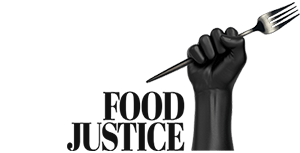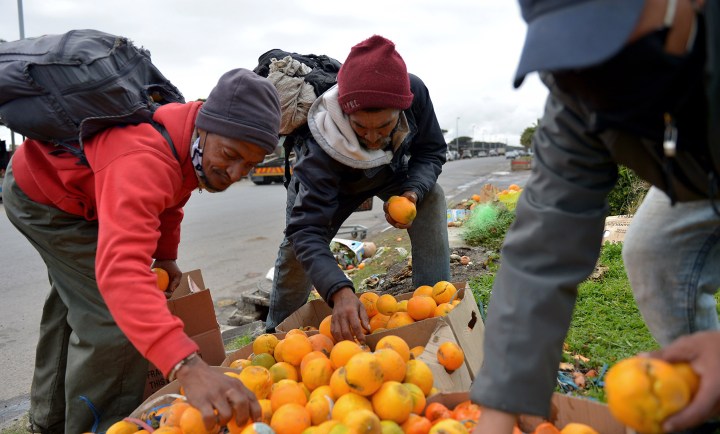
FOOD SECURITY OP-ED
Not so fast — targeted strategies to stop hunger fail to reach one in six children

We need an urgent national conversation about food security in South Africa. For this reason, criticism of the ‘10-best-buys’ proposal, aimed to alleviate child hunger, is a welcome contrast to radio silence from the food industry, which has opted not to engage publicly with this proposal. Encouragingly, Shoprite has just released its Food Index report, in which it commits to collaborative efforts to address food security, predicting that 49% of South Africans will be food insecure by 2025.
A recent article in Daily Maverick challenges the proposal currently under consideration to “double-discount” a bespoke brand of 10 highly nutritious foods, trying to close the food gap between what children need and what their families can afford.
Read more in Daily Maverick: Don’t put pressure on big retailers to cut profits on essential foods
The gist of this proposal is that manufacturers and retailers forgo their profits on one food label of 10 best-buy foods, matched by a government retail subsidy that would enable these foods to be sold below cost. Unlike a fixed cap, the actual price would vary in response to changes in underlying costs, but there would be a systematic and measurable price difference between the products sold under the subsidised food label and all other brands.
Read more in Daily Maverick: Subsidising these 10 essential products could help stave off malnutrition in SA, say civil society groups
Its aim is to ensure that a minimum list of nutritious foods, mostly high-protein, are more affordable to the third of children and quarter of the entire population who live below the food poverty line. The criticism levelled in the article is that there are more cost-effective ways to achieve this goal.
We certainly need an urgent national conversation about food security in South Africa. For this reason, criticism is a welcome contrast to radio silence from the food industry, which has opted not to engage publicly with this proposal.
Encouragingly, Shoprite has just released its Food Index report, in which it commits to collaborative efforts to address food security, predicting that 49% of South Africans will be food insecure by 2025.
Stark assessment
This is a startlingly frank ‒ possibly even overstated ‒ assessment of national risk by the country’s largest food retailer. Perhaps this is the industry opening we’ve been looking for to develop a stream of new proposals which can be assessed and revised or rejected, until we have a robust and practicable set of strategies to stop malnutrition. There is no single solution.
In this vein, the 10-best-buy proposal must be fully interrogated. As originators of the proposal, we would like to explore some of the assumptions behind its critique, starting with where our positions converge with those expressed in the article. Its bottom line is that grant spending should be increasingly diverted from big retailers into small and micro-scale enterprises, rather than building cooperative strategies with large food corporations.
We agree that market diversification, especially through local production and supply, is essential in spreading the profits that currently accrue to a few manufacturers and retailers in the highly concentrated food industry. But that doesn’t mean that large corporations should be off the hook until that happens.
It also does not necessarily follow that a market deconcentration strategy would make food more affordable, even though the wider economic benefits for local communities are compelling.
Quick bucks
During the Covid-19 pandemic, and in support of diversification, the DG Murray Trust channelled R160-million to needy families and early childhood development programmes through digital vouchers redeemable at more than 200,000 spaza shops, at a time when most emergency food relief was being sourced from big retailers.
It can be done, even in an informal business environment.
Still, we must be under no illusion that community-based enterprises are inevitably nobler than mega-corporations. Our experience through Covid-19 was that some entrepreneurs in both the formal and informal sectors kept looking for a quick buck. Besides, it would be difficult for emerging local enterprises to match the prices of large corporations like Shoprite and Pick n Pay, which buy in vast quantities directly from manufacturers.
Read more in Daily Maverick: Food Basket Check: Price hikes add strain to hungry South Africans
As calls for localisation increase, tensions are likely to grow between the source and cost of food on the table, and in seeking to fill the food gap for children there may be times when urgent strategies for affordability and longer-term community empowerment work in opposite directions.
Having said that, the 10 best buy scheme can be designed to include informal traders, as the discount could be applied at the manufacturer and wholesaler level. Traders could therefore buy the goods at lower cost, with the full discount already factored in. This would reduce the complexity of trying to include informal traders in a formal retail subsidy scheme.
Passing on the discount
It will be difficult to track whether the discount is retained by the trader or passed on to the consumer. But poorer consumers do tend to “buy down” – purchasing the goods that are cheapest to them, after transport costs are factored in. Informal traders should therefore still have the incentive to keep their customers by passing the discount on to them. In the case of spaza shops, price tracking could take the form of occasional sample surveys, as opposed to the continuous monitoring of large retailers.
Where richer people do benefit most is in the purchase of zero-rated fresh fruit, vegetables and milk, whereas the poor benefit more from zero-rated staples like maize and brown bread.
Where we differ is the assertion that interventions for food affordability should exclude price-reducing strategies in favour of targeted strategies such as social grants and food supplementation.
We need both.
The criticism directed at the 10-best-buy strategy is that it is allocatively inefficient – spending public money in a scattershot way whereas better systems for targeting exist.
The argument is that the wealthy derive more benefit from price-based strategies such as zero-rating of VAT than poorer people do. In the opinion of the critiquing author, it would be better to scrap zero-rating now and redirect the fiscal windfall into current provisioning gaps that directly target the poor.
Not so fast.
The Davis Tax Committee of 2018 echoed the findings of earlier studies by National Treasury that the zero-rating of VAT on specific foods provides a larger proportional benefit to the poor (because they spend more of their income on food), while providing a larger absolute benefit to the rich (who buy larger quantities of food).
VAT zero-rating does benefit the poor
It also pointed out that several studies had found zero-rating of specific basic foodstuffs to be “progressive”, offsetting the disproportionate burden of VAT on the poorest. Where richer people do benefit most is in the purchase of zero-rated fresh fruit, vegetables and milk, whereas the poor benefit more from zero-rated staples like maize and brown bread. These findings suggest that a sweeping dismissal of VAT zero-rating as a buffer for the poor masks some of its real benefits for poorer consumers, provided, of course, that they are passed on to them.
Nevertheless, the Davis Tax Committee finally concluded that, under ideal circumstances, the poor would be better served by eliminating zero- rating and using the additional tax revenue to increase pro-poor spending on the expenditure side of the budget. In practice, however, the committee argued that compensatory mechanisms would first need to be found to reach those households who do not already receive cash transfers.
This statement gets to the heart of our challenge.
It is the children most invisible to the system who are at highest risk.
While the Covid-19 relief grant of R350 showed that there is plenty of demand for an expanded social security system, that doesn’t necessarily mean that the system reaches all of the poorest and most vulnerable. This is especially true for children. In 2020, 82.6% of children eligible for the Child Support Grant (CSG) received it. Nearly 2.2 million children were excluded, mainly because of lack of documentation, lack of information and administrative barriers.
It has been argued that respondents in the General Household Survey and National Income Dynamics studies (on which these numbers are based) understate the true coverage of grants. If indeed there were significant self-report bias, one would expect it to be systematic and relatively constant over time and across age groups. This is not the case.

There are about 400,000 children who are not eligible for grants among the estimated 2.4 million immigrants in South Africa. (Photo: Gallo Images / Alet Pretorius)
The curse of non-participation
The uptake of the CSG has plateaued and even declined slightly over the past five years. Disconcertingly, the caregivers of almost half (48.3%) of the children under one year of age say that they do not receive it.
Add to this about 400,000 children who are not eligible for grants among the estimated 2.4 million immigrants in South Africa, and roughly one in six children in need of support receive no form of social grant.
Evidence shows that it is this group – eligible non-recipients of the CSG and children of foreigners – who are more likely to suffer from hunger and even die from acute malnutrition. It is the children most invisible to the system who are at highest risk, and until our ability to identify and target them is greatly improved, we have to use more generalised strategies to try to reach them as well.
In a climate of severe fiscal constraint, we should be implementing both targeted and generalised relief measures – simultaneously seeking to close the gap between the value of the CSG and the food poverty line, and increasing the nation’s buying power of nutritious foods.
This does not imply that price-based strategies cannot be targeted at all, as the risk of subsidising the wealthy can be mitigated in their design:
- First, most of the 10 best buy foods are mainly eaten by poorer families, and not even by rich people’s pets, which is genuinely a factor to consider. These include maize meal, speckled beans, soya mince and sour milk. (Eggs are the notable exception, but they are such an important brain food for children that it would be a missed opportunity to exclude them);
- Second, the food industry itself has an incentive to limit the spillover effect, which it can achieve by capping the volume of purchases and only selling the bespoke brand in lower-end stores if so wished; and
- Third, the financial risk of subsidising the rich will be shared equally between the government and business, as they contribute equally to the total discount.
Double discount is best for now
The beauty of the double discount proposal is that it doesn’t interfere with the normal movements of the market, as any fixed-price cap would. Prices of all the brand products of each of the 10 best buys will rise (and hopefully fall) as underlying costs shift. All that is required is to demonstrate a substantial and sustained price differential between the double-discounted food label and all the other brands of each food product.
This differential will be based on an agreed-upon weighted average profit margin for manufacturers and retailers to ensure that no commercially sensitive information is exchanged. Any evidence of closure of the price gap between the subsidised brand and other brands will be taken up with the retailers and manufacturers concerned.
The counter-suggestion that individual retailers simply disclose their specific profit margins as a prompt to direct that profit into feeding schemes, would not pass muster with the Competition Commission, not to mention that large-scale feeding schemes are notoriously difficult and costly to manage.
The next step for the 10-best-buys proposal is consideration of its viability by the National Economic Development and Labour Council, which has set up a subcommittee of business, labour and civil society to do just that. We are still open to its rejection, but only if a better option is put on the table for implementation now. DM
David Harrison is CEO of the DG Murray Trust. Zaheera Mohamed is CEO of Ilifa Labantwana.




















 Become an Insider
Become an Insider
Comments - Please login in order to comment.